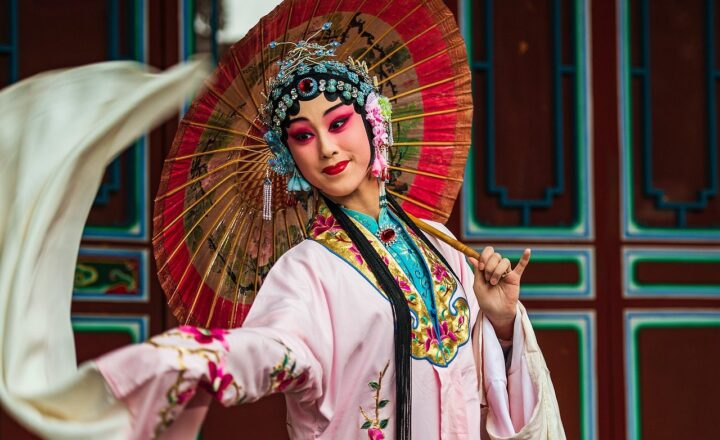How ‘Gossip Girl’ Became the Defining Teen Drama of the Late 2000s
November 12, 2024

In the world of television, few shows have exerted as significant an influence on pop culture as ‘Gossip Girl.’ Premiering on September 19, 2007, this teen drama quickly became a phenomenon, intertwining themes of wealth, friendship, and betrayal with a glamorous backdrop of affluent New York City. The show, based on the book series by Cecily von Ziegesar, captured the hearts of a generation, leaving an indelible mark on how teen dramas are crafted and consumed.
1. The Setting: A Glimpse into the Elite World of Manhattan’s Upper East Side
New York City serves as the enchanting playground for the series, with its lavish, penthouse lifestyles, designer wardrobes, and exclusive parties. This opulent setting immediately attracted viewers who were drawn to the fantasy of a life so drastically different from their own.
The series follows the lives of privileged teenagers Serena van der Woodsen and Blair Waldorf, alongside their friends and rivals. The show explores their romantic entanglements and social maneuvers, highlighting the dramatic consequences of betrayal and the complexities of teenage relationships in an affluent society.
By showcasing both the grandeur and the emptiness that often accompany wealth, ‘Gossip Girl’ resonates with audiences who understand the allure of riches paired with the struggles that often lie beneath the surface.
2. The Impact of the Narrator: The Mysterious Gossip Girl
One of the most innovative aspects of ‘Gossip Girl’ is the omnipresent, anonymous narrator—known simply as Gossip Girl—whose snarky commentary and unsolicited gossip about her peers kept audiences both entertained and engaged. This unique narrative style established a captivating hook and maintained constant intrigue throughout the series.
The decision to employ an unseen character who always knows the secrets and scandals of the main cast provides a lens through which viewers could witness the unfolding drama without being directly involved. The ambiguity of Gossip Girl’s identity also served as an important plot device that lasted for several seasons, keeping fans guessing and theorizing until the very end.
3. Fashion Influence: Defining Trends and Making Statements
‘Gossip Girl’ not only shaped teen culture through its storytelling but also transformed the fashion landscape of its time. The series is renowned for its chic costumes and stylish wardrobe, which reflect the characters’ personalities and roles within the narrative.
Blair Waldorf, portrayed by Leighton Meester, epitomized preppy style with her headbands, designer dresses, and polished outfits, inspiring countless viewers to emulate her iconic looks. On the other hand, Serena van der Woodsen, played by Blake Lively, represented a more bohemian and carefree aesthetic, with flowing dresses and layer-heavy ensembles that emphasized her relaxed, stylish persona.
Fashion designers and brands seized the opportunity to promote their products through product placements, which contributed to the show’s authenticity and relatability. The influence of ‘Gossip Girl’ can still be witnessed today, as many trends from the late 2000s are experiencing a resurgence in contemporary fashion.
4. Compelling Storylines: Teenage Life at Its Most Dramatic
The strength of ‘Gossip Girl’ resides in its engaging storylines—from love triangles to family struggles—that encapsulate the tumultuous nature of adolescence. The show artfully weaves together multiple character arcs, allowing viewers to invest emotionally in each individual’s journey.
Major plotlines, such as Blair’s pursuit of a fairytale romance and Serena’s fall from grace, reflect real-life teenage challenges: societal expectations, family pressures, and identity exploration. This relatability made the characters more human and imperfect, allowing fans to engage deeply with their stories.
Ultimately, the show revolutionized the encapsulation of teen drama, moving beyond superficial relationships with plotlines that tackled issues like mental health, privilege, and self-discovery. rnrn
5. Cultural Commentary: Reflection of Society and Class issues
As much as ‘Gossip Girl’ entertained, it also provided sharp commentary on social hierarchies, class division, and the pursuit of happiness within a materialistic framework. The series often highlights the follies and consequences of wealth, showcasing how the characters’ privileged lives cause conflicts, jealousy, and cruelty.
Through the lens of the Upper East Side elite, ‘Gossip Girl’ drew attention to broader societal issues, prompting discussions about class disparity and the superficial nature of fame and fortune. Despite its glamorous facade, the show simultaneously critiques the notion of the American Dream, underscoring that money cannot buy genuine love or happiness.
This duality catches the attention of viewers seeking not just escapism but also a deeper understanding of the societal dynamics at play.
6. Conclusion: The Headline That Never Fades
‘Gossip Girl’ positioned itself as the defining teen drama of the late 2000s, captivating audiences with its unique storytelling, glamorous setting, and rich character landscapes. By intertwining fashion, drama, and social commentary, it created a multi-faceted viewing experience that resonated deeply with fans.
Even years after its end in 2012, the cultural influence of ‘Gossip Girl’ persists. Its legacy endures through reboots and fond nostalgia, as it continues to inspire new generations of viewers wanting to uncover the secrets of Manhattan’s elite. The phrase “You know you love me, XOXO, Gossip Girl” remains forever etched in the minds of loyal fans—a reminder of a time when youth was narrated with such flair, drama, and an undeniable desire for belonging.







